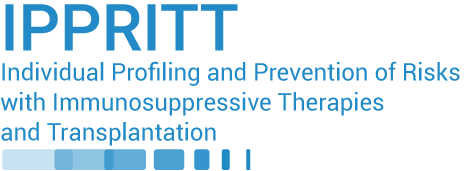Estimation of drug exposure by machine learning based on simulations from published pharmacokinetic models: The example of tacrolimus
Abstract
We previously demonstrated that Machine learning (ML) algorithms can accurately estimate drug area under the curve (AUC) of tacrolimus or mycophenolate mofetil (MMF) based on limited information, as well as or even better than maximum a posteriori Bayesian estimation (MAP-BE). However, the major limitation in the development of such ML algorithms is the limited availability of large databases of concentration vs. time profiles for such drugs. The objectives of this study were: (i) to develop a Xgboost model to estimate tacrolimus inter-dose AUC based on concentration-time profiles obtained from a literature population pharmacokinetic (POPPK) model using Monte Carlo simulation; and (ii) to compare its performance with that of MAP-BE in external datasets of rich concentration-time profiles. The population parameters of a previously published PK model were used in the mrgsolve R package to simulate 9000 rich interdose tacrolimus profiles (one concentration simulated every 30 min) at steady-state. Data splitting was performed to obtain a training set (75%) and a test set (25%). Xgboost algorithms able to estimate tacrolimus AUC based on 2 or 3 concentrations were developed in the training set and the model with the lowest RMSE in a tenfold cross-validation experiment was evaluated in the test set, as well as in 4 independent, rich PK datasets from transplant patients. ML algorithms based on 2 or 3 concentrations and a few covariates yielded excellent AUC estimation in the external validation datasets (relative bias < 5% and relative RMSE < 10%), comparable to those obtained with MAP-BE. In conclusion, Xgboost machine learning models trained on concentration-time profiles simulated using literature POPPK models allow accurate tacrolimus AUC estimation based on sparse concentration data. This study paves the way to the development of artificial intelligence at the service of precision therapeutic drug monitoring in different therapeutic areas.
Keywords
Machine learning Monte Carlo simulations Tacrolimus Xgboost Therapeutic drug monitoring Population pharmacokinetics AI
artificial intelligence AUC
area-under the curve MAP-BE
maximum a posteriori Bayesian estimates ML
machine learning MPE
mean prediction error POPPK
population pharmacokinetic RMSE
Root mean square error TDM
therapeutic drug monitoring
artificial intelligence
AUC
area-under the curve
MAP-BE
maximum a posteriori Bayesian estimates
ML
machine learning
MPE
mean prediction error
POPPK
population pharmacokinetic
RMSE
Root mean square error
TDM
Domains
Pharmacology
Fichier principal
 Revision_unmarked_tacro_simulation_ml_pharamcol_res150321 (1).pdf (557.08 Ko)
Télécharger le fichier
ESM1_modeltac (1).pdf (35.72 Ko)
Télécharger le fichier
ESM_2 (1).pdf (52.15 Ko)
Télécharger le fichier
ESM_3 (1).pdf (59.83 Ko)
Télécharger le fichier
ESM_4_table_parameters (corPM) (1).docx (12.22 Ko)
Télécharger le fichier
ESM_4_table_parameters (corPM) (1).pdf (168.96 Ko)
Télécharger le fichier
ESM_5_VIP_plots (1).pdf (48.67 Ko)
Télécharger le fichier
Figure1_Simulated_conc_and_auc_191220 (1).pdf (5.11 Ko)
Télécharger le fichier
Figure2_sim_sp_rp_test_sets_191220 (1).pdf (253.85 Ko)
Télécharger le fichier
Figure3_sim_Residual_scatterplot_all_pro_191220 (1).pdf (132.65 Ko)
Télécharger le fichier
Figure4_sim_individual_all_pro_191220 (1).pdf (81.26 Ko)
Télécharger le fichier
Revision_unmarked_tacro_simulation_ml_pharamcol_res150321 (1).pdf (557.08 Ko)
Télécharger le fichier
ESM1_modeltac (1).pdf (35.72 Ko)
Télécharger le fichier
ESM_2 (1).pdf (52.15 Ko)
Télécharger le fichier
ESM_3 (1).pdf (59.83 Ko)
Télécharger le fichier
ESM_4_table_parameters (corPM) (1).docx (12.22 Ko)
Télécharger le fichier
ESM_4_table_parameters (corPM) (1).pdf (168.96 Ko)
Télécharger le fichier
ESM_5_VIP_plots (1).pdf (48.67 Ko)
Télécharger le fichier
Figure1_Simulated_conc_and_auc_191220 (1).pdf (5.11 Ko)
Télécharger le fichier
Figure2_sim_sp_rp_test_sets_191220 (1).pdf (253.85 Ko)
Télécharger le fichier
Figure3_sim_Residual_scatterplot_all_pro_191220 (1).pdf (132.65 Ko)
Télécharger le fichier
Figure4_sim_individual_all_pro_191220 (1).pdf (81.26 Ko)
Télécharger le fichier
Origin : Files produced by the author(s)
Origin : Files produced by the author(s)



